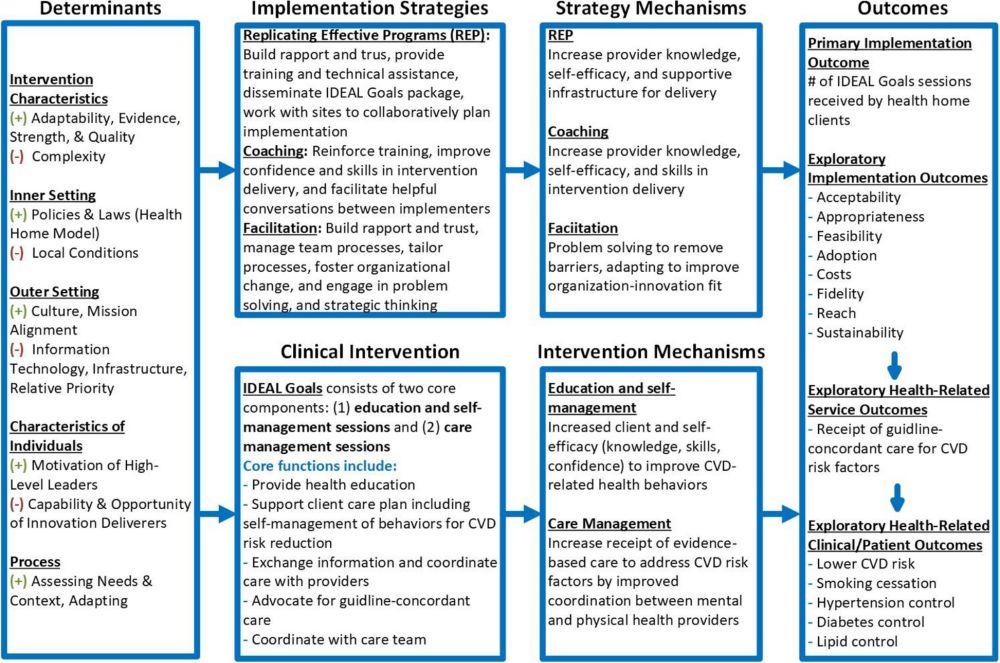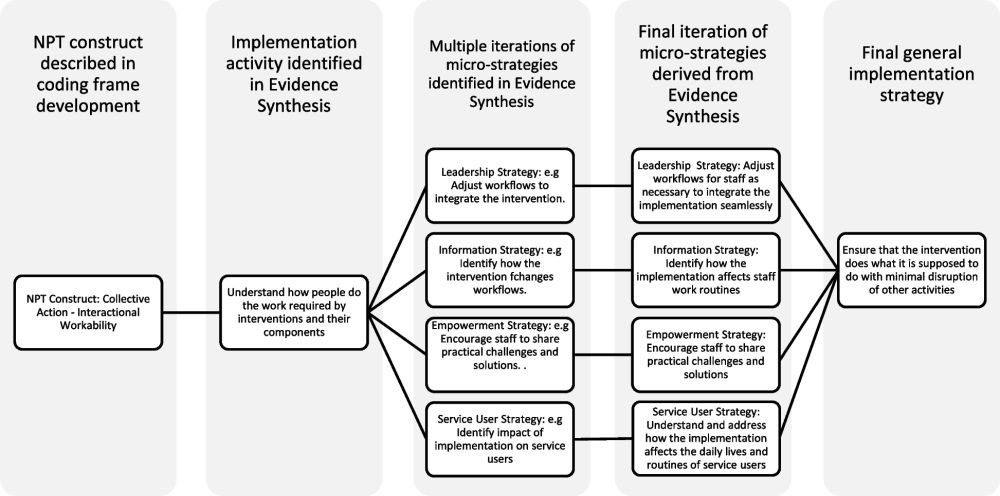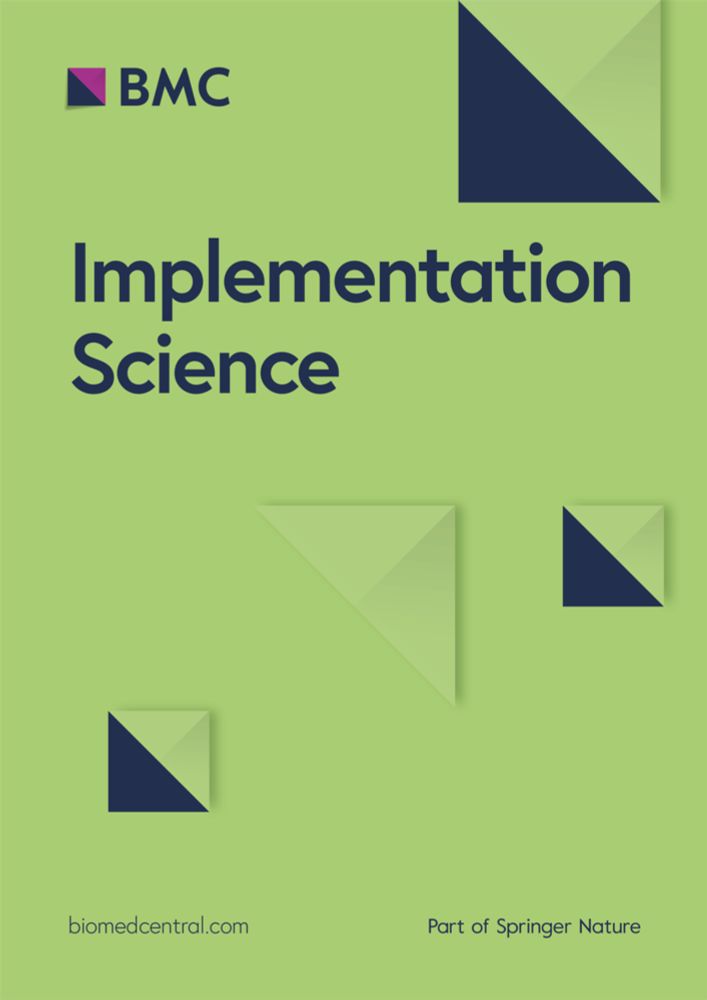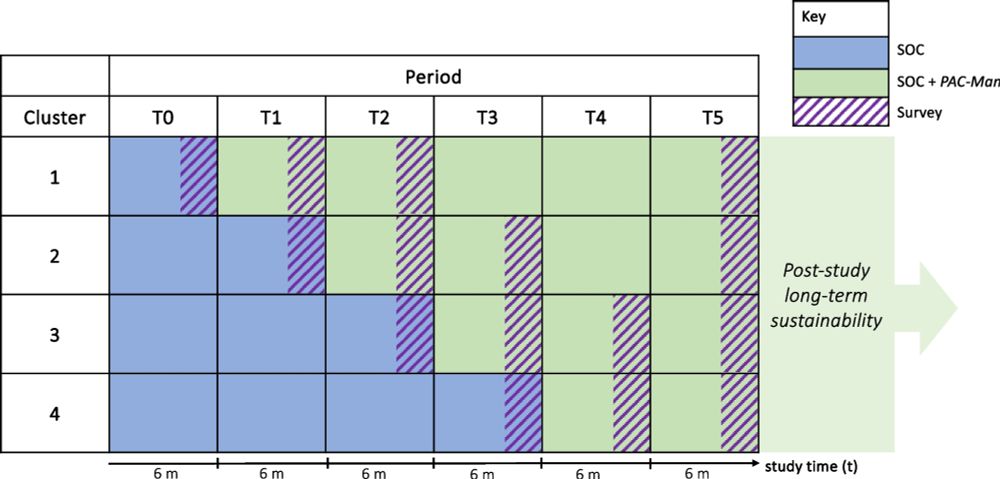
https://implementationscience.biomedcentral.com
📅 Wednesday 19th Mar 2025
⏰ 16.00 PM GMT (London)
Attend via cassyni.com/events/PwH8s...
implementationscience.biomedcentral.com/articles/10....

implementationscience.biomedcentral.com/articles/10....
implementationscience.biomedcentral.com/articles/10....

implementationscience.biomedcentral.com/articles/10....
implementationscience.biomedcentral.com/articles/10....

implementationscience.biomedcentral.com/articles/10....
implementationsciencecomms.biomedcentral.com/articles/10....

implementationsciencecomms.biomedcentral.com/articles/10....
implementationsciencecomms.biomedcentral.com/articles/10....

implementationsciencecomms.biomedcentral.com/articles/10....
implementationsciencecomms.biomedcentral.com/articles/10....

implementationsciencecomms.biomedcentral.com/articles/10....
implementationsciencecomms.biomedcentral.com/articles/10....

implementationsciencecomms.biomedcentral.com/articles/10....
implementationscience.biomedcentral.com/articles/10....

implementationscience.biomedcentral.com/articles/10....
implementationscience.biomedcentral.com/articles/10....

implementationscience.biomedcentral.com/articles/10....
implementationscience.biomedcentral.com/articles/10....

implementationscience.biomedcentral.com/articles/10....
implementationsciencecomms.biomedcentral.com/articles/10....

implementationsciencecomms.biomedcentral.com/articles/10....
implementationsciencecomms.biomedcentral.com/articles/10....

implementationsciencecomms.biomedcentral.com/articles/10....
implementationsciencecomms.biomedcentral.com/articles/10....

implementationsciencecomms.biomedcentral.com/articles/10....
implementationscience.biomedcentral.com/articles/10....

implementationsciencecomms.biomedcentral.com/articles/10....

implementationsciencecomms.biomedcentral.com/articles/10....
It contains:
✅ 5 step guide to using CFIR in implementation research
✅ Essential tools & templates
✅ FAQs from real users
Essential resource for new & experienced CFIR users!
Proud to have contributed to this guide as part of the CFIR Leadership Team. #ImpSci
implementationscience.biomedcentral.com/articles/10....

It contains:
✅ 5 step guide to using CFIR in implementation research
✅ Essential tools & templates
✅ FAQs from real users
Essential resource for new & experienced CFIR users!
Proud to have contributed to this guide as part of the CFIR Leadership Team. #ImpSci
implementationsciencecomms.biomedcentral.com/articles/10....

implementationsciencecomms.biomedcentral.com/articles/10....
implementationscience.biomedcentral.com/articles/10....

implementationscience.biomedcentral.com/articles/10....
implementationsciencecomms.biomedcentral.com/articles/10....

implementationsciencecomms.biomedcentral.com/articles/10....
implementationsciencecomms.biomedcentral.com/articles/10....

implementationsciencecomms.biomedcentral.com/articles/10....
implementationsciencecomms.biomedcentral.com/articles/10....

implementationsciencecomms.biomedcentral.com/articles/10....
implementationsciencecomms.biomedcentral.com/articles/10....

implementationsciencecomms.biomedcentral.com/articles/10....
implementationscience.biomedcentral.com/articles/10....

implementationscience.biomedcentral.com/articles/10....
implementationscience.biomedcentral.com/articles/10....

implementationscience.biomedcentral.com/articles/10....
implementationsciencecomms.biomedcentral.com/articles/10....

implementationsciencecomms.biomedcentral.com/articles/10....

